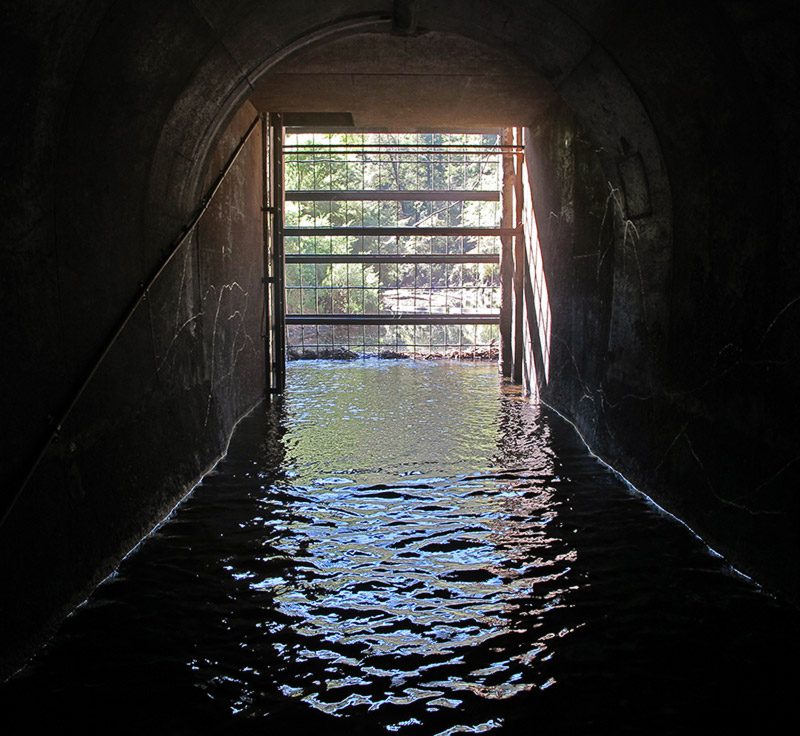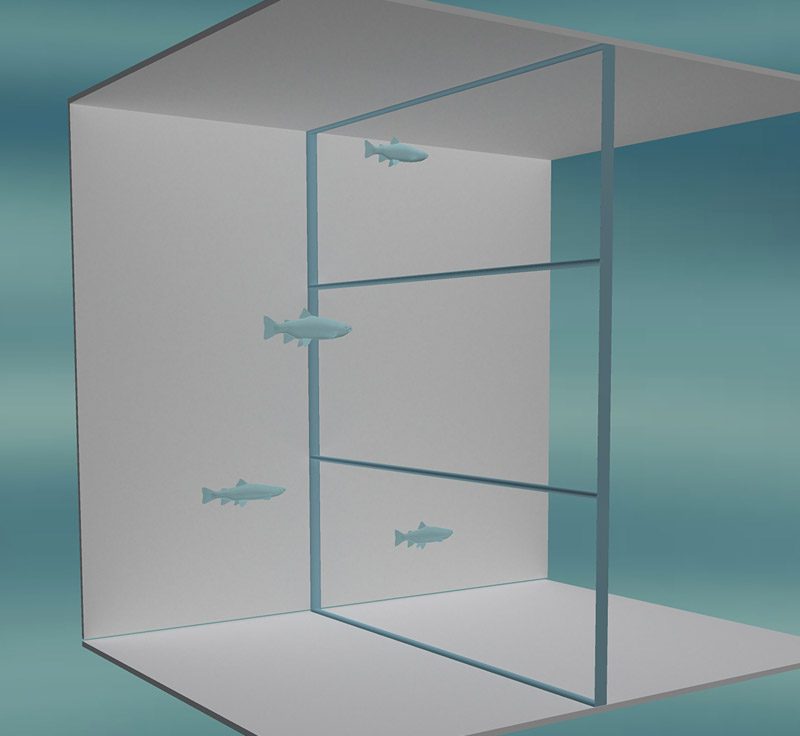Friday August 24, 2012

People frequently come to us with new or challenging circumstances for research in aquatic environments, and that is certainly the case with one of the projects we are currently working on. In this situation, we want to use Passive Integrated Transponder (PIT) tags to detect and record presence of individual fish and turtles that may become entrained into a diversion tunnel. This is quite a tunnel, measuring about 12 feet wide, 15 feet high, and nearly 20,000 feet long. Detecting entrainment in this tunnel is further complicated by the fact that anything installed inside the tunnel will be inaccessible for a year and must be robust enough to withstand the pressure of water flowing up to the roof.

We opted to build an array of fiberglass PIT tag antennas that will transmit detection data to a land-based receiver. Unfortunately, making a single antenna around the tunnel perimeter is infeasible because of the limitations of the technology. We decided three stacked antennas would give us the best detection rate. When working with PIT tag antennas metal isn’t an option, yet we must construct them strong enough to withstand the force of water and debris they may encounter. We are currently fabricating PIT tag antennas from a mix of fiberglass and Kevlar to be ready for installation and testing next month. Watch for more posts on the fabrication and installation of these antennas for this challenging tunnel application.
